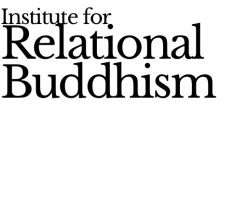The five ‘what’s’ of Relational buddhism
1. What is Relational Buddhism
1.1 Relational Buddhism is a psychological approach to the basic Buddhist teachings, principles as acknowledged by all Buddhist denominations, which views interpersonal relationships as the centrepiece of its daily practice…
1.2 This practice grows naturally from the awareness that human separateness is an illusion and that sane living requires speech/wording that expresses loving-kindness, compassion, joy, and relational poise (equanimity)…
1.3 Awareness and attention combined are the key ingredients for pristine/heartfelt mindfulness which looks from the inside out and un-covers: what is observed as perception or thought has been socially constructed before…
2. What is Social Constructionism
2.1 Social Construction-ing is a practice studied in Social Constructionism, an exponent of mainstream social psychology, which submits that anything conceivable is an interpretation emanating from a particular social group…
2.2 Anything intelligible owes its intelligibility to socio-cultural communities, in other words: nothing is “true” or “real” unless the people to whom it may concern agree on something’s intelligibility, truthfulness, or reality…
2.3 Born into a world of linguistic meaning, we are “inter-mind” rather than bounded mind, “in-between-selves” rather than illusory self, “Relational Being” or “Interbeing” rather than deluded souls, cut off from others…
3. What is Pristine Mindfulness
3.1 Cultivation of attention-awareness toward calming (Samatha) / absorption (Samadhi), insight (Vipassana) / emptiness (Sunyata), non-duality (Yogacara) / Buddha-kill (Chan), social sublimes (Brahmaviharas) and “dharmas“…
3.2 The 8 stages require zeal (1/2, onto Nirvana: flame extinction), wise reflection (3/4, onto emptiness the highest wisdom), clear comprehension (5/6, onto non-clinging to Buddha), and benevolence (7/8, onto “in-between-selves”)…
3.3 Stages 1-4 is a journey of absolute bodhicitta, the spirit of heartfelt diligence to awaken along AHA/introvert experiences; stages 5-8 travels in relative bodhicitta, the dedication to awaken along HAHA/extravert experiences…
4. What are “dharmas”?
4.1 Scholars grappled how to postulate the smallest units of experience (dharmas) encountered during meditation to end suffering due to birth/aging/illness/death, notably if caused by greed, hatred, and ignorance (how mind works)…
4.2 Encountering dharmas, the mind’s eye sees in the space of Body/Speech/Mind the full gamut of modalities (skandhas): sensation, ap/perception, imagination, cognition, emotion, motivation, intention, volition, action, and interaction…
4.3 Modalities work in “Dependent Origination” when arising/peaking/subsiding/disappearing, and might appear as emotional derivatives of greed (fear of losing, or grief of the lost) and hatred (of self: depression, or of others: anger)…
5. How do scholars see “dharmas”?
5.1 Down the ages scholars fathomed these atomistic experiences as empty of “intrinsic nature” or “inherent existence” (svabhava). Thus, according to the Buddha (c.2600 years ago), dharma is “neither-empty-nor-not-empty”…
5.2 For the 2nd Buddha in history, Nagarjuna (2nd century), who tracked a via negativa, dharma is “empty-of-emptiness”, while for the 3rd Buddha, Vasubandhu (4th century), who tracked a via positiva, dharma is “empty-non-duality”…
5.3 Surprisingly, 17 centuries later, now the tenets of modernity are transcended by post-modern ideation, dharmas can be understood in K.J. Gergen’s rendering as: “ontologically-mute-social-constructions-empty-of-Transcendental-Truths”…

